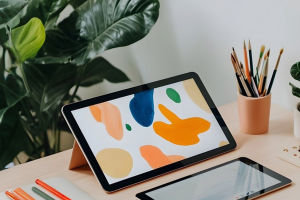In the world of industrial design, one of the most important challenges is balancing aesthetics with functionality. It's not just about creating products that look good; they must also serve their purpose in the best possible way.
Have you ever considered how a beautifully designed product can enhance your everyday experience? Whether it's a sleek phone, an ergonomic chair, or an intuitive kitchen appliance, the way a product looks often directly influences how we feel about it.
But achieving this delicate balance is no simple task. Let's dive into how industrial design manages to fuse the beauty of form with the function of everyday use.
The Importance of Function in Industrial Design
At the heart of any industrial design lies functionality. The primary role of any product is to serve its intended purpose, whether it's making our lives easier, safer, or more efficient. This means that design decisions must first and foremost address how well the product works. For instance, a chair must be comfortable, durable, and supportive, while a coffee machine must brew coffee quickly and consistently.
However, functionality alone is not enough in today's competitive market. Consumers want products that not only perform well but also look aesthetically pleasing. This is why the design community has shifted its focus toward creating products that seamlessly combine these elements.
Why Aesthetics Matter in Design
Aesthetics play a huge role in the success of any industrial design. As much as we rely on a product's function, how it looks can be just as important. Attractive products engage consumers, create emotional connections, and even influence purchasing decisions.
Aesthetics also influence how we perceive quality and innovation. A product that looks well-crafted is often assumed to be of high quality. Good design, in this case, works as a silent communicator of value. If a product is pleasing to the eye, it subtly enhances the overall experience of using it, creating a positive association for the user.
Balancing Form and Function
So, how do designers strike the right balance between aesthetics and functionality? It's a fine line to walk, but it begins with understanding the user's needs. Industrial designers must consider both the practical aspects of a product and the emotional responses it elicits.
One common strategy is through minimalism. By simplifying shapes and focusing on clean, intuitive designs, minimalism eliminates unnecessary clutter while retaining both beauty and practicality. Another strategy is ergonomic design, which focuses on making products more comfortable and user-friendly. Ergonomically designed products, like office chairs or kitchen tools, consider how people interact with them daily, ensuring that functionality is never compromised for the purpose of appearance.
Innovative Materials and Technology
Advancements in materials and technology have also made it easier to balance form and function. The introduction of sustainable, lightweight materials, such as recycled plastics or carbon fiber, allows designers to create both durable and visually striking products. These materials enable designers to experiment with new shapes, textures, and finishes, creating products that feel fresh and innovative while still fulfilling their functional roles.
The use of smart technology also adds another layer to the industrial design process. Smart devices, like fitness trackers or smart speakers, often combine sleek designs with advanced functionality. The technology inside these products enhances their usability, while the exterior design keeps the product stylish and appealing.
Design Thinking: A Holistic Approach
At the core of modern industrial design is the concept of "design thinking," a methodology that emphasizes empathy, creativity, and problem-solving. This approach encourages designers to not only focus on the end product but also on the entire user experience. By understanding the user's pain points and desires, designers can create products that are not only practical but also emotionally satisfying.
Design thinking helps bridge the gap between form and function by encouraging a balance of both. It calls for designers to consider every aspect of the user's interaction with the product — from usability to visual appeal — ensuring that each element is thoughtfully integrated into the final design.
Conclusion: The Perfect Harmony of Beauty and Use
In conclusion, industrial design is about more than just creating objects; it's about shaping experiences. By balancing aesthetics and functionality, industrial designers are able to craft products that not only look great but also improve our daily lives. Whether it's through minimalist shapes, ergonomic features, or innovative materials, great design finds a way to make beauty and utility work together in perfect harmony.
So, the next time you use a product that feels just right, take a moment to appreciate the thoughtfulness behind its design. The balance of form and function is no easy feat, but it's what makes products truly exceptional.
What do you think — is there a product you use daily that strikes the perfect balance between beauty and practicality? Share your thoughts with us!


